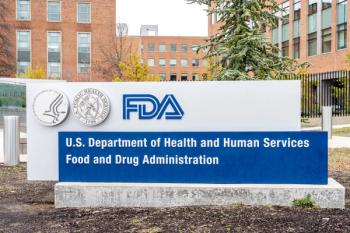
- Applied Clinical Trials-12-01-2018
- Volume 27
- Issue 12
Do As I Say, And As I Do
Supporting real change in clinical trials is more than just lip service-it’s putting the information out there transparently for all stakeholders to measure and make decisions.
What is more tiring for anyone in this industry to hear? Is it the most oft-quoted statistic from the Tufts Center for the Study of Drug Development that the average cost of getting a drug developed through to marketing approval is $2.87 billion; or the blaming of the FDA? Or is it that FDA is the major hurdle to trying anything new in clinical trials? That the fear industry has of doing something differently in a clinical trial is that the agency will reject the data and, ultimately, the drug. It’s clear the costs and industry practices behind clinical trials are not escaping the FDA, and they aren’t pleased.
For the FDA’s sake, let’s put aside the argument that many clinical trials fail in Phase III before they even see the light of submission and face that FDA scrutiny. Let’s also reject the notion that FDA is unwilling to work with pharma. The agency is more than willing to meet with sponsors very early on in their clinical trial planning processes to discuss options. These formal meetings also have
CDER and the FDA have backed up their support of basket trials, master protocols, and more collaborative types of trials by initiating for comment on Oct. 1 the draft guidance, “Master Protocols: Efficient Clinical Trial Design Strategies to Expedite Development of Oncology Drugs and Biologics.’’
FDA also put forth for comment its draft guidance, intending to replace one from 2010, ‘‘Adaptive Designs for Clinical Trials of Drugs and Biologics,’’ which provides direction on “the basic principles for designing, conducting, and reporting the results from an adaptive clinical trial.”
It looks as if FDA supports changes in trial designs-as it has for the past eight years-to promote more efficient and timely review of results for drugs being tested in clinical trials. However, the FDA estimates that 40 sponsors will submit 240 plans for trials utilizing an adaptive design, and only 15 will prepare and submit to FDA 20 marketing applications that rely on an adaptive design trial.
In another
From clinical trials to the commercial, FDA (and HHS), as well as smaller biopharma, are quickly tiring of these shenanigans. If you aren’t part of the solution, you are going to be considered the problem. Being part of the solution isn’t just lip service, it’s putting that information out there transparently for everyone to measure and make decisions.
Lisa Henderson is Editor-in-Chief of Applied Clinical Trials. She can be reached at
Articles in this issue
about 7 years ago
Using Facebook Ads to Recruit Clinical Study Participantsabout 7 years ago
It’s Not the Time to Relax on Pediatric Medicines R&Dabout 7 years ago
FDA Clarifies Research Policies to Facilitate New Drug Developmentabout 7 years ago
The Ultimate Win-Win: Sites Invest, Sponsors Rewardabout 7 years ago
Risk-Based Monitoring: Barriers to Adoptionabout 7 years ago
Insights into Outsourcing Practices and Oversight Effectivenessabout 7 years ago
PV Software is Having Its ‘Salesforce’ Momentabout 7 years ago
Applied Clinical Trials, December 2018 Issue (PDF)about 7 years ago
Leveraging Technology to Develop New Trial Endpointsabout 7 years ago
Patients as Partners in the API EraNewsletter
Stay current in clinical research with Applied Clinical Trials, providing expert insights, regulatory updates, and practical strategies for successful clinical trial design and execution.


